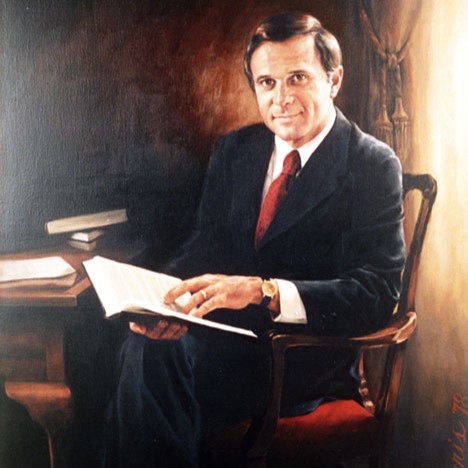This website uses cookies so that we can provide you with the best user experience possible. Cookie information is stored in your browser and performs functions such as recognizing you when you return to our website and helping our team to understand which sections of the website you find most interesting and useful. Please see our privacy policy for more information.
Arkansas
Gov. Homer Martin Adkins
- January 14, 1941 - January 9, 1945
- Democrat
- October 15, 1890
- February 26, 1964
- Arkansas
- Draughon’s Practical Business College; Little Rock College of Pharmacy
- Married Estelle Elise Smith
- Army
About
HOMER MARTIN ADKINS, Arkansas’s 32nd governor, was born near Jacksonville, Arkansas, on October 15, 1890. He attended Draughon’s Practical Business College in 1908 and graduated from the Little Rock College of Pharmacy in 1911. At the age of 20, Adkins was licensed as a pharmacist, but needed special permission to practice because he was six months shy of the required age of 21. During World War I, he served in the army, was assigned to the medical corps, and later rose to the rank of captain. Adkins entered politics in 1923, when he served one term as sheriff of Pulaski County. He was appointed collector of internal revenue in 1933, and served until 1940, when he resigned to run for the governor. On November 5, 1940, Adkins won election to the governor’s office, and on January 14, 1941 was sworn into office. He was reelected to a second term on November 3, 1942.
During his tenure, the state treasury surplus rose from $21 million to $45 million, and the first workmen’s compensation commission was appointed. With Adkins encouraged the development of facilities to support the war efforts and the federal government spent over $300 million on defense plants and military installations in Arkansas during World War II. The Grand River Dam in Oklahoma also was completed, which provided an enormous amount of much-needed electrical power to northeastern Arkansas. Adkins also worked to refund the highway debt–Arkansas voters passed his refunding act with approval in 1943, with entire issuance being purchased by the federal government’s Reconstruction Finance Corporation. After leaving office on January 9, 1945, Adkins was a political broker, consultant, and advisor to several politicians. In 1948, he was appointed administrator of the Arkansas Employment Security Division, and in 1956 he established a public-relations firm in Little Rock. Adkins died on February 26, 1964, and is buried at the Roselawn Memorial Park Cemetery, Little Rock, Arkansas.
Source
Donovan, Timothy P., and Willard B. Gatewood, Jr., The Governors of Arkansas, Essays in Political Biography, Fayetteville, The University of Arkansas Press, 1981
Sobel, Robert, and John Raimo, eds. Biographical Directory of the Governors of the United States, 1789-1978, Vol. 1, Westport, Conn.; Meckler Books, 1978. 4 vols.












